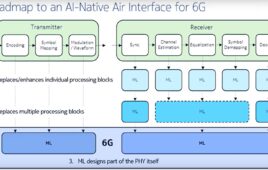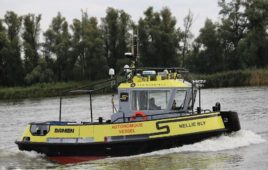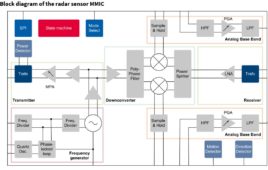Lush, green forests brimming with vibrancy are the staple contrast to Earth’s vast oceans. Beyond their beautiful exteriors, forests play a vital role for life on our planet. To better monitor these domains, researchers looked toward a fleet of automated, low-cost drones.
According to CORDIS, about 1.6 billion people, which is more than a quarter of the population, depend on forests for their livelihood. Within that stat, 60 million indigenous people share an integral bond with forests for their survival. Soil protection, water regulation, biodiversity support, and carbon storage—all vital roles delegated to Earth’s greenery.
However, forest degradation and deforestation pose major threats, “responsible for about 17 percent of carbon emissions emitting more CO2 than the world’s entire transportation sector. Each year around 7 million hectares of forest are lost to deforestation,” according to CORDIS. Though, some initiatives are in place, like REDD+, which offer incentives for forest management in developing countries. Payments are doled out based on the amount of carbon stored in a country’s forests.
But accurate measuring of biomass (the amount of plant material in a given area) and carbon totals is a tricky and expensive business. “If you can measure the biomass you can measure the carbon and get a number which has value for a country,” Pedro Freire da Silva, satellite and flight system expert, says.
So, scientists from Brazil and six European countries came up with a solution through the EU-funded 2015 project called COREGAL. The team employed a series of low-cost, automated drones to fly over forests and map biomass. Each drone was suited with a combined Position-Reflectometry Galileo receiver, which not only helped with pinpointing location coordinates, but served as the biomass sensor.
The fleet utilized Global Navigation Satellite System-Reflectometry (GNSS-R), which is a “remote-sensing technique…that uses GNSS signals reflected from the Earth’s surface to infer its surface properties…” according to the paper, “The rise of GNSS reflectometry for Earth remote sensing,” published in 2015 IEEE International Geoscience and Remote Sensing Symposium (IGARSS).
During project COREGAL, satellites transmitted signals that reflected on the forest floor, which were picked up by the drones’ biomass sensors. The signals became distorted and weaker as they passed through thick forest canopies, meaning the weaker the signal the drone received, the more biomass that existed in the nearby forest.
“The more leaves you have, the more power (from GPS and Galileo) is lost,” says da Silva. “If you combine this data with satellite data we get a more accurate map of biomass than either would (alone).”
Although the project is now closed, the team conducted flight trials in Portugal, hoping to eventually advance biomass mapping in Brazil, which according to CORDIS, is home to one-third of the Earth’s rainforests. In 2017, the project sent a “call for ideas” for GNSS-R technology applications based on the project’s platform.
Measuring Earth’s biomass and carbon stock is still on scientists’ to-do lists. The European Space Agency (ESA) plans to start a 5-year global surveying mission in 2022 with its Biomass Earth Explorer satellite, aiming to chart the amount of biomass and carbon stored in Earth’s forests, as well as provide information on how woodland regions change over time.




